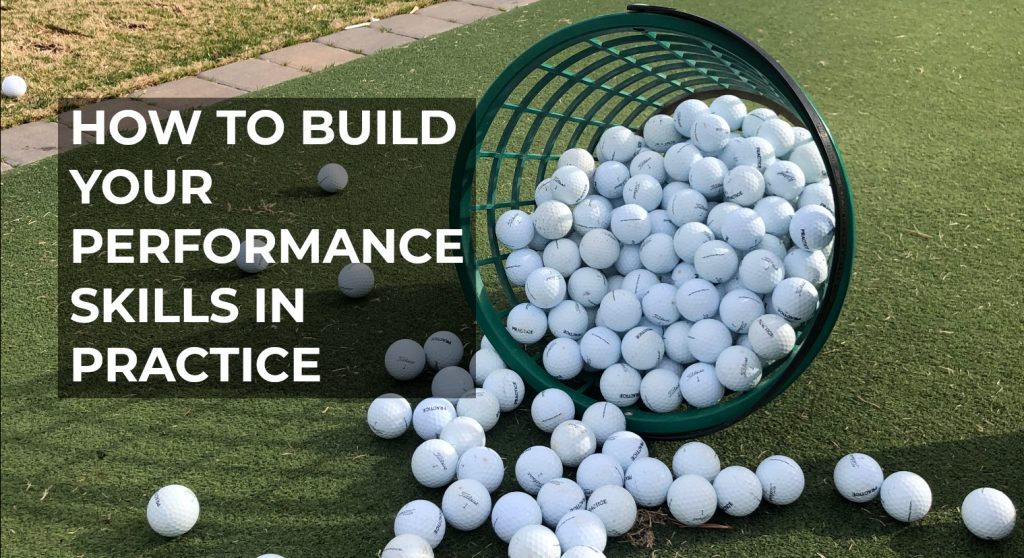
Every action you take in practice should be leading to change for the better, whether you see better shots in the practice session or not. Long-term improvement is not about how one day (or practice session) goes – it’s more about the little things that are being learned during each session, which adds up into big improvement over time.
How do we learn new skills most effectively?
Whether it’s learning how to get a golf ball in a hole in less strokes or learning a new language, research show us that there are 5 conditions which must be met:
- Motivation
- Intention
- Focus
- Challenge
- Feedback
- Measurement
Motivation
Why do you want to improve your golf skills? What purpose does it serve for you to do so? Write this down. Remind yourself as often as possible why you play. There are going to be plenty of challenges along the way to your future success so your motivation must be high enough for you to get there, or you should consider doing something else.
Intention
How are you going to approach getting better? Every shot and practice session must have a purpose. What are you trying to change? What is the specific goal of the shot or practice session? What is the problem you are trying to solve and how does that fit into the big picture of overall improvement? Are you just going to “work on your swing” or do you have evidence (in the form of stats) for what you need to change? The research that has been done on high performers shows that most of the time during practice, they are working on their weaknesses (biggest opportunities for growth).
Focus
To improve skills requires high focus on the area you want to change. If you have clear intention for what you are going to work on and why, there shouldn’t be a problem being 100% focused and engaged with the task. This is another reason that ball-beating doesn’t work – you lose focus on what you are trying to change because you get lost in the success of hitting the ball well. Shorter reps (of 5-10 shots) are better, with each swing being highly focused on the specific movement you are trying to change. Slow motion swings can be very effective in changing movement because of the time the brain gets to process the intention and the feel. You can “sandwich” slow-motion swings (with or without the ball) between your normal-speed swings. Timothy Lee and Richard Schmidt suggest in their research paper “PaR (Plan-act-Review) Golf: Motor Learning Research and Improving Golf Skills” that 20 balls in 20 minutes (a different shot with each ball) makes practice more “deliberate” and allows the golfer more time to plan and review each shot (which is plays a more important role in learning that the act of making the swing).
Challenge and Constraints
How do we learn most effectively? By being challenged, making mistakes, failing, making refinements and trying again. Developing new skills is not supposed to be easy. Not to mention, failure and mistakes happen in every round, so you may as well practice dealing with the frustration and developing coping strategies. Make each rep a new challenge, so your brain has to prepare for it, and have consequences for failing (there should be clear success or failure). Learn how to be more comfortable being uncomfortable. I’ve got a sample session for you to do this at the end of the lesson.
Feedback
What are you learning from each shot and how did your practice session go? Were you able to stick to the task/intention you set for yourself? What is it that you can refine and do differently next time? Most of my students keep a “performance journal” in which they add notes and reflections from their practice sessions to make the next one even better.
Measurement
How do you know if there’s been any growth in skill? For the period that you are working on a specific aspect of your game, there should be regular testing. How else will you know whether you are improving? As part of your practice sessions, you should have some sort of pressurized test, as well as looking at your on-course performance.
Sample Practice Session
Primary short term goal: GIR to 58%
Technical improvement (20 mins)
- 20 balls in 25 minutes
- 1 minute between each shot to review and plan
- 100% focus on the movement to change
- “Sandwich” slow motion swings in between shots
- Place balls behind you so you have to walk to retrieve the next ball which forces you to reflect and plan the next shot
Performance Practice (45 mins)
- The shots you pick for the challenge will pertain to the area of your game you need to improve
- The skill level of the player should determine the constraints for each shot (how difficult it is). Plan these ahead of time and write in your performance journal.
- 45 mins to complete the challenge
- If you fail at the 3 shots in a level, you return to the beginning of that level and add one minute to the time
- Go through your full Shot Routine for each shot
- Different target each time
- To make it more difficult you can run on the spot between shots to increase heart rate
Level One:
- PW to X ft of a target
- 9 Iron to within X ft of target
- 8 iron to within X ft of target
Level Two:
- 7 iron fade to within X ft of the target
- 7 iron straight to within X ft of the target
- 7 iron draw to within X ft of the target
Level Three
- Low trajectory 6 iron to within X ft of target
- Regular trajectory 5 iron to within X ft of target
- High trajectory 4 iron to within X ft of target
If you’d like further practice drills for how to practice with more focus, intention and challenge, then you’ll certainly benefit from the Golf State of Mind Practice System.


